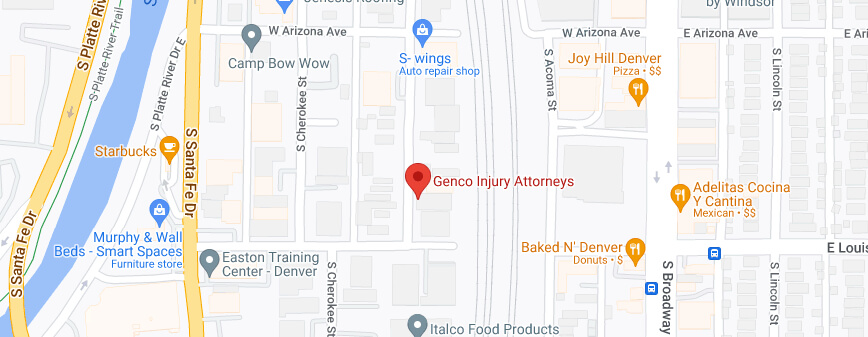What Are Colorado’s Seat Belt Laws?
Numerous studies have demonstrated the value of wearing a seat belt while in a car, especially in the front seat. Colorado law can point to that when requiring everyone in the front seat of a vehicle over the age of 15 to wear a seat belt. Passengers in the back seat aren’t required to do the same (although it’s recommended). People riding in an autocycle (a sort of cross between a car and a motorcycle) with a seat belt are required to use it on roads or highways. Children have varying requirements in terms of child safety restraints and car seats.
There are few exceptions to this requirement. People in vehicles manufactured before 1968 that don’t have seat belts are exempt, as are people with demonstrable physical or mental disabilities that make wearing a seat belt difficult or impossible (based on specific state requirements).
The seat belt law is considered a secondary offense in Colorado. That means that law enforcement can’t pull someone over only if they’re not wearing a seat belt. But if law enforcement pulls someone over for another traffic infraction and sees anyone not using proper restraints (including front seat passengers or children anywhere in the vehicle), they can ticket the driver.
What Are Penalties for Not Wearing a Seat Belt?
If someone is pulled over for another traffic violation (for example, speeding or running a red light) and they’re not wearing a seat belt, they can be ticketed and fined.
What Could Happen if I Was Injured in a Car Accident and Wasn’t Wearing a Seat Belt at the Time?
This is a complicated situation that would likely benefit from the assistance of experienced car accident attorneys. That’s because the accident has become one in which more than one driver may be at fault. Often, people think car accidents have only one liable person, but that’s not necessarily the case. Many times, two or more drivers have some fault.
In the case of a seat belt, the other driver may try to claim that your injuries were mainly related to not wearing a seat belt, not because of whatever role they had in the accident. In cases like those, the case turns to comparative negligence. That means that each person involved in the accident will be assigned a percentage of the fault, and that, in turn, can have significant consequences for the injured party who wasn’t wearing a seat belt.
Across the U.S., each state has its own approach to comparative negligence, using one of three laws.
- Contributory negligence. This is the harshest law and is only used in a few states. It finds that if the victim is even 1% at fault for the accident, they’re ineligible to file for claims.
- Pure comparative negligence. This is the reverse of contributory negligence and is also used by fewer states. It finds that even if the victim is 99% at fault, they can still file for and receive 1% of any damages awarded to them.
- Modified comparative negligence. This is the middle ground between the other two. It finds that if the victim is at least half responsible for the accident (“half” defined as 50% or 51%, depending on the state), they can’t receive damages. For example, say someone speeding hits a car running a red light and injures the driver. The injured driver may be found 60% at fault and can’t receive damages. Or they’re found 40% at fault and can only receive 60% of the damages awarded to them.
Colorado follows the 50% modified comparative negligence model. That means if the victim is found 50% or greater at fault for the accident, they can’t receive damages. Their liability threshold must be 49% or lower to file for damages. This can cause the other party to work diligently to prove that not wearing a seat belt caused the injury more than anything the other party did.
What Should I Do if I Was Injured in an Accident But Wasn’t Wearing a Seat Belt?
Regardless of how you feel, see a doctor as soon as possible. Even if you think your injuries are minor, it’s vital to have them checked out. Some injuries present few or no symptoms, but they can worsen and become dangerous if untreated.
Then call Genco Injury Attorneys at 303-500-1376 for a free case evaluation. Any car accident case resulting in injuries can be complex. When the injured party wasn’t wearing a seat belt, the other party will likely try to avoid paying damages by pushing most of the fault onto the victim due to Colorado’s comparative negligence laws. Our team of experienced, knowledgeable car accident attorneys can help prepare a defense that keeps that in mind and works toward the best possible outcomes for you.
Because of that comparative negligence law, it’s crucial that you not have any communication with anyone else involved in the accident (other than sharing your name, contact details, and insurance info as required by law), their attorneys, or their insurance representatives. They may attempt to get you to say something that might be construed as accepting liability for the accident and your injury, or they might try to convince you to accept a settlement that’s far lower than you might otherwise get. Don’t respond to any emails, calls, or letters, but send them on to your attorney.









